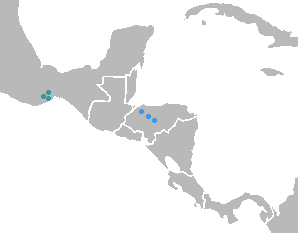| Jicaquean | |
|---|---|
| Tolan | |
| Geographic distribution | Honduras |
| Ethnicity | Tolupan |
| Linguistic classification | Hokan ?
|
| Subdivisions |
|
| Language codes | |
| Glottolog | jica1245 |
 The Jicaque languages are in Honduras in the center of the map. | |
Jicaquean, also known as Tolan, is a small language family of Honduras. There are two attested Jicaquean languages, Tol (Eastern Jicaque) and Western Jicaque (Holt 1999), which Campbell (1997) reports were about as distant as English and Swedish. Only Tol survives.